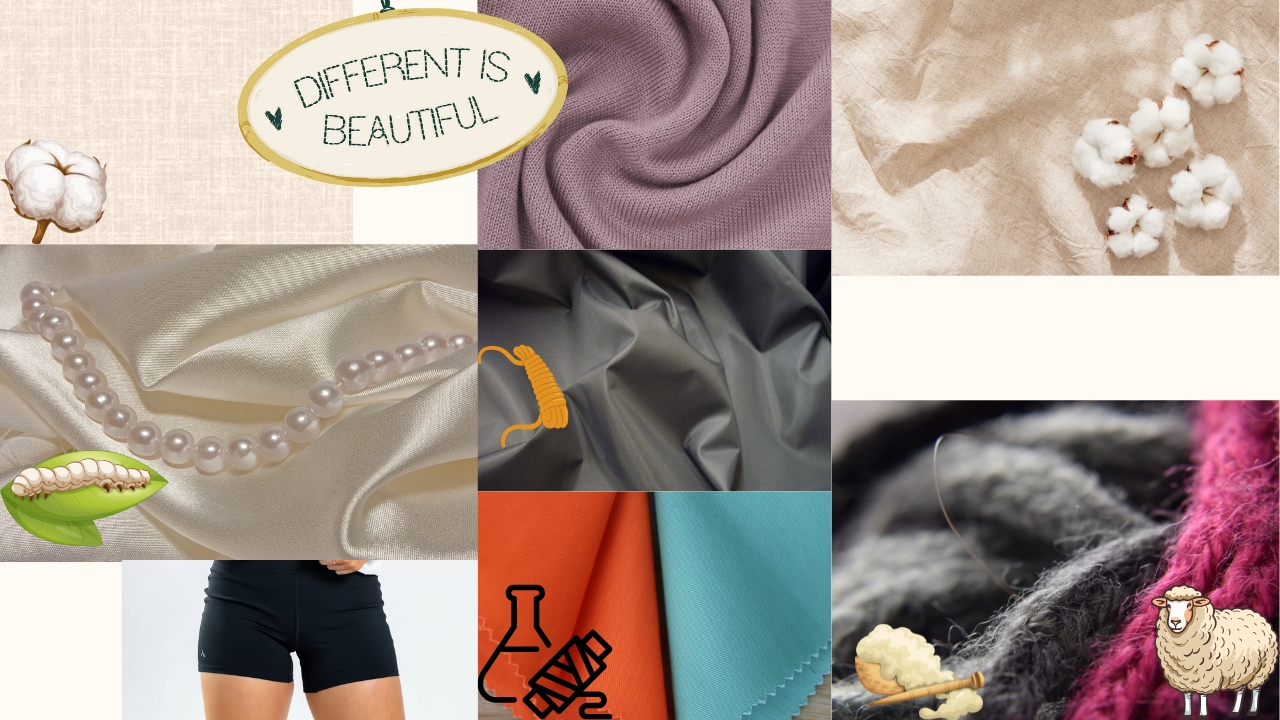The clothes we wear don’t just shape our style. They also play a powerful role in our skin’s health. Most of us pick fabrics based on how they look or feel, but few stop to ask: How does this material affect my skin?
Dermatologists have long warned that fabrics can trigger irritation, dryness, or even acne. At the same time, fashion experts argue that fabric choice defines elegance, comfort, and practicality. Striking a balance between fashion and skin health is not just possible—it’s essential. A 2019 study in the Journal of the European Academy of Dermatology and Venereology found that around 20% of people report skin issues linked to clothing textiles. That’s a statistic no stylish wardrobe should ignore.
So, which fabrics are friends to your skin, and which ones secretly stress it out? Let’s explore.
The Science of Fabrics and Skin
Why does fabric matter to skin? It comes down to three main factors:
- Breathability – Fabrics that let air flow keep skin cool and reduce sweat buildup.
- Moisture-Wicking – Materials that draw sweat away help prevent bacterial overgrowth and acne.
- Friction – Rough textures or tight weaves can irritate sensitive skin or worsen conditions like eczema.
Textiles also trap (or release) bacteria. Synthetic fibers like polyester hold on to sweat longer, creating a warm, damp environment where acne-causing bacteria thrive. Natural fabrics like cotton and linen, on the other hand, allow moisture to evaporate more easily.
But not all natural fabrics are innocent. Wool, for instance, has sharp microscopic fibers that can cause itchiness, especially in people with eczema. That’s why dermatologists recommend being strategic, not just assuming “natural = safe.”
Natural Fabrics – Comfort Meets Tradition
Cotton
Cotton is a timeless favorite in both fashion and dermatology. It’s soft, breathable, and generally hypoallergenic. Doctors often recommend cotton underwear and sleepwear because it reduce irritation.
But cotton isn’t perfect. It absorbs moisture instead of wicking it away. That means sweat stays trapped, which can cause chafing or fungal infections in humid climates. For workouts, cotton may not be your skin’s best friend.
Linen
Linen is fashion’s summer star. Lightweight and airy, it allows maximum airflow and keeps skin cool. Dermatologists note that linen’s loose weave reduces friction, making it ideal for people with eczema or sensitive skin.
Its drawback? It wrinkles easily, which makes it less appealing for formal wear. However, the “lived-in” look has become trendy, allowing linen to shine in both casual and stylish wardrobes.
Silk
Silk is luxurious on the skin. Its smooth texture reduces friction, which makes it excellent for people with acne or eczema-prone skin. Some dermatologists recommend silk pillowcases to reduce “sleep wrinkles” and hair frizz.
Fashion-wise, silk adds elegance but demands delicate care. Sweat stains can damage it, and dry cleaning is often required. Still, for both skin health and style, silk holds a premium place.
Wool
Wool is a winter essential, known for warmth and insulation. But for many, it causes itching. That’s because wool fibers have uneven scales that irritate the skin barrier.
Dermatologists often advise against wool for eczema patients. Fashion brands have responded by offering softer alternatives like merino wool or cashmere, which are gentler on skin and still stylish.

Synthetic Fabrics – Style Meets Technology
Polyester
Polyester dominates fast fashion due to its durability and wrinkle resistance. It’s a favorite in activewear because it wicks moisture better than cotton.
But here’s the downside: polyester is less breathable. It can trap heat and sweat, increasing the risk of acne mechanica (sweat-and-friction acne). A 2021 dermatology study linked polyester clothing to higher bacterial counts on skin compared to cotton.
Nylon
Nylon is sleek, stretchy, and often used in lingerie and tights. From a fashion angle, it hugs the body well. From a dermatology perspective, however, it traps moisture and heat, which may worsen yeast infections when worn as underwear.
Acrylic
Acrylic mimics wool in warmth but is fully synthetic. Many with sensitive skin report itching or rashes from acrylic sweaters. Dermatologists believe this comes from both the fibers themselves and the chemical dyes used.
Spandex (Lycra/Elastane)
Spandex revolutionized fashion by making clothing stretchable. Leggings, sports bras, and shapewear all rely on it. But tight-fitting spandex can trap sweat, leading to folliculitis (inflammation of hair follicles). Dermatologists recommend wearing spandex only in short durations and choosing pieces with ventilation panels.
Blended Fabrics – The Middle Ground
Fashion rarely uses fabrics in pure form. Blends improve durability, reduce cost, or add comfort.
- Cotton-Polyester Blends: Practical and wrinkle-resistant, but less breathable than pure cotton.
- Bamboo Blends: Bamboo has gained popularity as an eco-friendly and hypoallergenic option. Its fibers are smooth and antibacterial, making it a good choice for sensitive skin.
- Modal and Tencel (Lyocell): These semi-synthetics are derived from wood pulp. They are soft, breathable, and moisture-wicking—earning praise from dermatologists and fashion designers alike.
Blended fabrics often represent a compromise between style and skin health. The key is knowing which blend ratios suit your needs best.
Fabrics and Common Skin Concerns
Eczema
Eczema patients should avoid wool, acrylic, and polyester. Cotton, silk, and bamboo are safer bets. Dermatologists often recommend soft, loose clothing to minimize friction.
Acne
Tight synthetic clothing can trap sweat and worsen acne, especially in athletes. Opt for breathable fabrics like cotton for daily wear and high-tech moisture-wicking blends for exercise.
Allergic Reactions
Sometimes it’s not the fabric itself but the dyes and chemicals used in processing that trigger allergies. Nickel from metal zippers and formaldehyde in wrinkle-resistant shirts are common culprits. Choosing organic, untreated fabrics reduces this risk.
Fashion Meets Dermatology – Practical Tips
- Dress for the Climate: Cotton and linen for hot weather, wool and blends for cold.
- Check the Labels: Look for natural fibers or skin-friendly blends. Avoid “100% polyester” for everyday use if you have sensitive skin.
- Rotate Your Fabrics: Don’t wear tight spandex daily. Alternate with looser cotton or silk.
- Mind Your Laundry: Harsh detergents leave residues that irritate skin. Use fragrance-free detergents for sensitive skin.
- Prioritize Comfort Over Trend: Fashion is flexible. A linen shirt or bamboo T-shirt can look stylish while being skin-friendly.
Conclusion
Fabrics shape more than your wardrobe—they shape your skin’s health. The right material can reduce irritation, prevent acne, and even boost confidence. The wrong one can leave you itching, sweating, or breaking out.
Fashion doesn’t have to compete with dermatology. By choosing fabrics thoughtfully, you can protect your skin while looking your best. Next time you shop, ask yourself: Does this fabric love my skin as much as I love its style?
Your skin deserves clothes that care as much as they charm.






